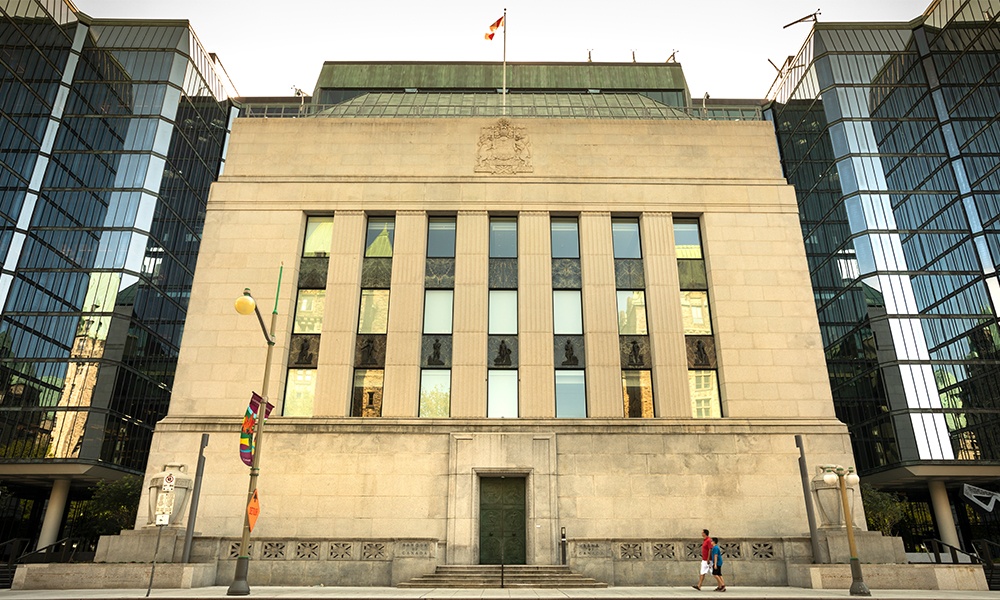Central bank has a few less-than-ideal options to quell consequences of unprecedented stimulus

Few would fault the Bank of Canada for its recent aggressive measures to stem the effects of the coronavirus pandemic on financial markets. But if the bank is not careful, its actions may have at least one undesirable effect on the Canadian economy moving forward.
“How [the BoC’s expansions to] QE will play out for monetary policy, and especially the inflation target, is cause for concern,” wrote Steve Ambler and Jeremy Kronick of the CD Howe Institute in a column published by the Financial Post.
While acknowledging that the bank’s focus on financial stability makes sense given the current situation, the pair said that the medium-term consequences for inflation and its potential economic impact should also be weighed. From March 11 to April 8, they said that its balance sheet has more than doubled from $120 billion to $275 billion, far outmatching its largest-one month increase in 2008 of 20%.
“Most of the increase was in so-called high-powered money: currency in circulation plus deposits held at the Bank of Canada by financial institutions,” they said, noting that it increased from just over $89 billion to nearly $227 billion on April 8. Due to the central bank’s asset purchases, deposits exploded from a little over $25 million to more than $134 billion.
If Canadian financial institutions were to expand lending, Ambler and Kronick said, it would have a highly inflationary effect as more money chases after a limited supply of goods. One option to mitigate that impact, they said, would be to clarify that this balance sheet expansion is temporary, though that would just negate its power to boost demand as households and businesses back their spending in anticipation of the stimulus going away.
“A second possibility would be to maintain what is now effectively a ‘floor’ system for the overnight interest rate,” they said, explaining that the BoC is at the moment effectively incentivizing Canadian banks to do less lending to the economy at large by removing the relative cost of leaving deposits with the central bank. “That does mute economic activity somewhat but the silver lining is slightly less inflation.”
A third path is for the BoC to increase the overnight target rate, consequently pushing up interest rates generally. “Unfortunately, that will raise the carrying cost of all the new debt our governments are taking on as they try to fight the COVID slowdown,” they said, adding that should interest rates outpace the rate economic growth, the government would be forced to reduce its spending or raise taxes.
“Each option will have different consequences for both the prices Canadians face and the prices they expect to face,” Ambler and Kronick wrote, emphasizing that the central bank should be transparent in making its decision.



